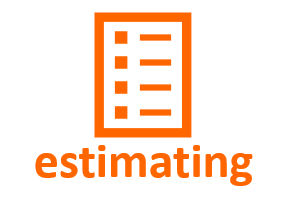Five Financial
Best Practices
This useful information comes from Leslie Shiner and Melanie Hodgsdon. Click to go to the original article in Remodeling Magazine. ---->
1) Successful construction companies manage the job by the budget
Create a job budget that outlines the anticipated job costs. Then, use a good job cost-reporting system to measure performance against the budget. Remember the job budget never includes overhead or profit and the labor costs in the budget represent true labor costs, not billing rates.
BBOS Estimator can help you track job budget and job costs. BBOS Estimator is part of the Builder Academy toolbox.
2) Successful construction companies track gross margin carefully, on each job
Gross profit is total job revenue minus total job costs. This shows the amount of money for each job that is left over to cover overhead expenses and contribute to profit. Gross margin is a percentage (gross profit divided by total revenue) that represents how much of the incoming dollars are gross profit. Converting gross profit (a dollar amount) to gross margin (a percentage) allows you to compare relative profitability of different size jobs.
The Fifth Commandment for running a construction business suggests that you follow financial ratio analysis religiously. Gross Margin is one of the ratios you should follow.
3) Successful construction companies create operating budgets
While job budgets are important on a micro level, managing the company on a macro level means creating expectations and goals. Develop an operating budget to calculate your sales and gross margin goals. These numbers provide guidance for how much you can spend for overhead and what your net profit target should be.
4) Successful construction companies track labor utilization
Field employees may be the key to job completion, but their time isn’t 100% billable. For example, if you pay a field worker for 2,080 hours (40 hours per week x 52 weeks) but are only able to bill customers for 1,850 hours, the employee utilization rate (1850 billable hours divided by 2080 paid hours) is just under 89%. When you are estimating labor for a job, take this into account.
There are other considerations that need to be made, as well. For more on correctly pricing your labor burden, see the link below.
5) Successful construction companies track change orders
Change orders can make or break a job, because doing extra work without getting paid for it erodes or eliminates profit. Track and invoice changes or additions on a regular basis. Clearly communicate with the customer all changes in overall job price and completion date, so there are no nasty surprises for either you or the client at the end of the job.
The Builder Resources Client Management System can help you capture all the information and make sure you get paid for changes requested by the Client.
If you want to be the best, most profitable construction company you can be, find out what works for other companies and then do those things. There is no need to create your own failures when you can recreate other company's successes.













